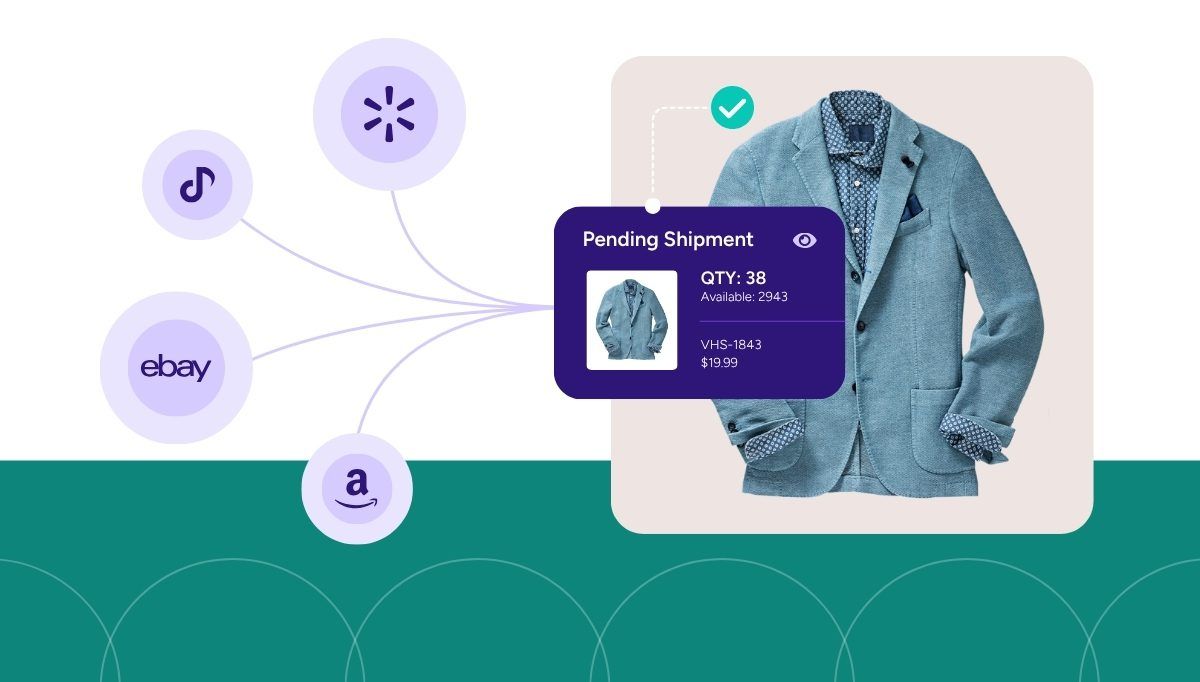Shoppers see your product on TikTok Shop, add it to their cart in the app or on Amazon, check delivery options on Walmart, then visit your DTC site to compare pricing or promotions. Their entire journey happens on their phone, often in under two minutes. Behind that seamless experience for shoppers, retailers and brands are often managing a patchwork of systems. Teams jump between tools, update listings by hand, and rely on delayed reports to make decisions. What looks simple to the shopper can be chaotic behind the scenes.
So where do you begin when it all feels urgent? These three areas are the best place to start.
A more sustainable approach replaces that chaos with visibility. When all your sales channels connect to a single system, you can automate routine tasks, track performance in real time, and spend less time fixing avoidable problems. That’s where control begins.
Tip 1: Connect all channels to a single source of truth
A product shows as available when it isn’t. A return is processed but never synced back to inventory. A sale goes unfulfilled because stock was never updated in time.
When orders, inventory, and product data live in separate systems, problems multiply. Retailers say their top profitability blockers are returns and fulfillment—both rooted in fractured systems. Most brands and retailers deal with these problems every day. Inconsistent data creates delays, frustrates customers, and drains time from your team.
To move faster and waste less time fixing errors, connect your sales channels to a single system that reflects real-time inventory and order status. This eliminates confusion, speeds up decisions, and lowers the risk of disappointing customers.
What to look for in a solution:
- One view of inventory across all marketplaces
- Real-time updates on orders and fulfillment
- Fewer manual checks and workarounds
Tip 2: Use dynamic inventory allocation to match demand with availability
Channel demand can change quickly. A product may sell out on one platform while sitting idle on another. If inventory stays locked in place, you’re likely to miss revenue on high-performing channels or end up canceling orders when one platform oversells.
Most teams try to solve this by manually shifting inventory across systems. But that’s hard to scale and easy to get wrong.
Instead, set up rules to allocate inventory dynamically. Let performance data drive where products are available, and make sure low-stock thresholds can trigger updates before they cause problems.
Questions to ask to determine the best choice for a fix:
- Are we still allocating inventory manually across marketplaces?
- Do we have guardrails in place to prevent overselling?
- Can we adjust availability in real time when demand shifts?
Tip 3: Standardize product content to deliver consistent brand experiences
67% of brands report that content optimization is one of their biggest challenges. Not because they don’t know what good content looks like, but because updating it across multiple channels takes more effort than it should. And that is evident in returns. 41% of global consumers said they returned an item because the product didn’t match the description or images, according to Rithum’s 2025 Global Returns & Profit Impact Report.
Create a process to manage product content from one place and publish it to all channels. Make sure updates happen regularly, not just when something breaks.
Where to focus:
- Align titles, images, and descriptions across all marketplaces
- Track when content was last updated and where it lives
- Review content quarterly to stay ahead of channel changes
Growth doesn’t have to come with added complexity. Reduce avoidable errors, spend less time reacting, and focus more energy on performance.
If your systems aren’t making this easier, it may be time to rethink how you scale. Schedule a demo to learn more.
Micah McGuire is Senior Product Marketer at Rithum.




